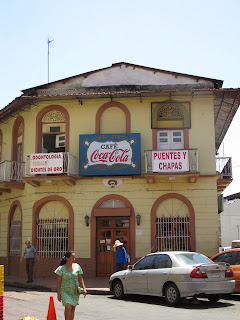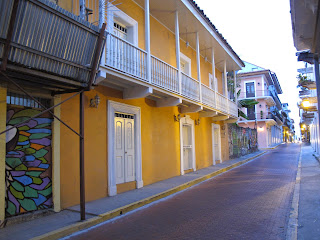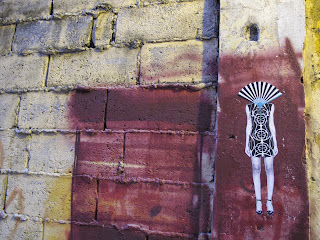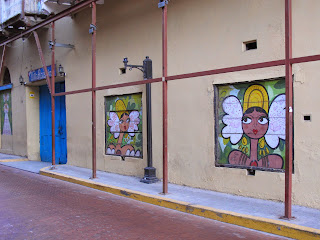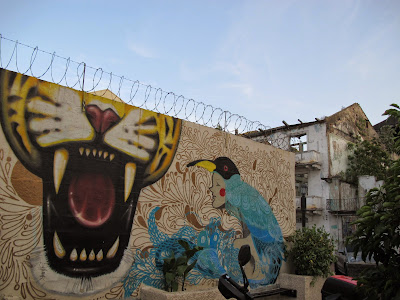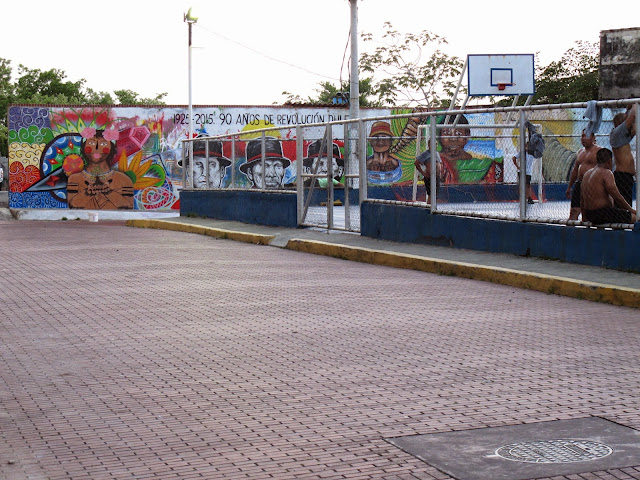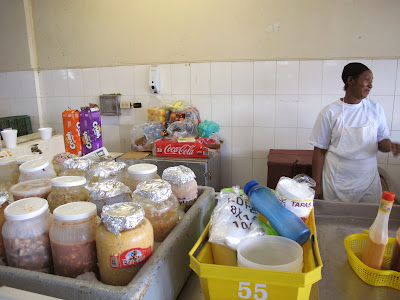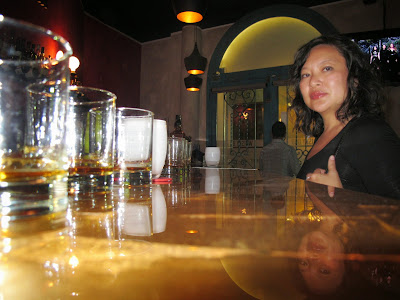Lake Arenal, COSTA RICA
Feb.28-Mar.1, 2015
You want to charge me WHAT!? to walk in the forest?!?!!
Costa Rica's renowned fantastic rainforests were within my hugging arms for the next week or so, and the fellow at the entrance booth wanted to charge $24 US to hike on a trail. $32 US with a guide, which he strongly recommended. It was completely socked in and raining to boot, so what would a guide be able to point to anyway!?? I was SO mad.
But first: Colin arrived!!
I was back in Costa Rica now, with a couple days of rest and relaxation in Liberia, the main city in northern Costa Rica. Colin gallantly picked me up at the funky purple place where I had been staying, recuperating from a butt-kicking cold - darn AC in Panama City! - which had me mostly sleeping, sitting quietly, and drinking a boiled tea made of fresh ginger, sweet lemons, honey and lemongrass.
 |
| Breakfast fruit |
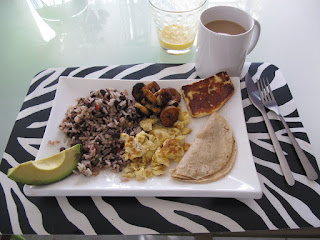 |
| Typical Costa Rican breakfast |
 |
| Costa Rican flora |
We were now enjoying the temporary luxury and freedom of a rental car, and aimed east across the warm dry dry savannah towards Lake Arenal, where the maps promised the much-anticipated rainforest. In addition to my cold, my nose was also spewing blood, I assume as a result of going from 100% to 0% humidity. Gradually the colours did morph from dusty browns and yellows to greens, white windmills and a blue blue lake.
We stayed at a nice place halfway along the north side of the lake for a night, where we drank gin and tonic on the warm balcony while watching bouts of rain fall onto the lake, and marvelling at the swifts fly about and dive like mad.
 |
| Watching the storms |
 |
| Storms look even better through gin-coloured glasses |
And now, after having completed the rest of the journey around the north side of the lake, we were all suited up, ready for a hike in the rainy rainforest, gaping at the young man who told us it would be $24 US to do so. Each. For this trail only.
The billboards should have been a dead give-away: zip-line this! bridge-walk that! waterfalls! hot springs resort! Plus we were still outside the national park boundary. But, a stop at another set of trails, this time within the park, still wanted $10 US each for spectacular views of the Arenal Volcano. In the fog...
We drove instead to our abode for the next couple nights, hoping for an early afternoon check-in and some warm lunch in La Fortuna - located on the east side of the Arenal Volcano, which sat at the east end of the lake, and therefore would be free of rain because the clouds were all stuck up on the volcano, right? I stewed in the passenger seat, arms folded, staring at the rain-blurred windshield, and contemplated the freedom of Canada's national parks where I play regularly, and which, until now, I have completely taken for granted.
Canadian National Parks
Parks Canada is a government agency which is given federal tax dollars every year to, according to their mandate, "protect and present nationally significant examples of Canada’s natural and cultural heritage, and foster public understanding, appreciation and enjoyment in ways that ensure the ecological and commemorative integrity of these places for present and future generations" [1].
"Heritage" sites include our 44 national parks (8 of which are also UNESCO world heritage sites) [2], national historic sites, and marine conservation areas. Canada’s was the first national park system in the world, formed by Sir Wilfred Laurier's government in 1911; the first national park itself in Canada was created in 1885, to protect 26 square km around the natural hot springs near Banff, AB [3]. The "special-ness" of Canadians and their parks can be demonstrated by the coming about of the first northern national park in 1976:
While flying over Baffin Island with his wife Aline, an awestruck Jean Chrétien [former Canadian Prime Minister 1993-2003] resolves to make a park here for her. Chrétien later explained, “When I returned to my office … I consulted the Minister of Indian Affairs, who was myself, consulted the Minister of Northern Affairs, who was myself, and consulted the minister responsible for parks, who was myself, and they all agreed on the matter.” As a result, Auyuittuq National Park is created. [3].A visitor - Canadian or foreign - pays a fee from $0 to less than $10 to spend a day in the park (depending on the park), or under $20 for a family/group of 7 or less. Many parks have annual passes. Alternatively, $68 gets an individual annual pass for access to over 60% of all parks, or $136 for an annual family/group pass (all of the above in Canadian dollars) [4]. A pass provides unlimited access to all trails and most facilities for the duration of the pass.
Parks Canada publishes annual Parks visitors guides for each area across the country - free both online and in print - showing maps and descriptions of popular trails, camping areas, visitor centres and other facilities.
Many of the national park bathroom facilities with which I am familiar (ie. western Canada) are typically clean outhouses, with metal lockable doors, rarely out of toilet paper, complete with a wall-mounted hand sanitizer unit. Some remain open and cared for throughout the year at popular winter destinations.
So how is Canada able to do this? What does Costa Rice do instead?
I just wanted to go walk in some rainforest, see some different kinds of trees and animals than what I do in the Rocky Mountains or Alberta Boreal Forest. Now, I was going to have figure out why this was going to cost me a tree-hugging arm and a hiking-leg.






